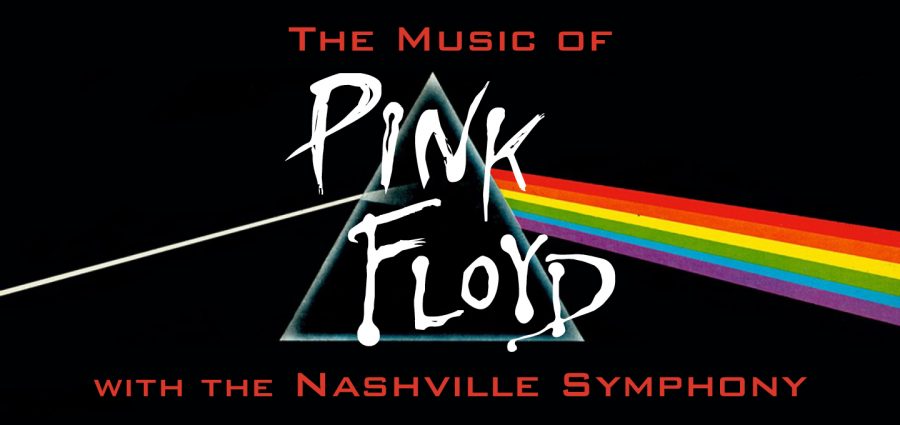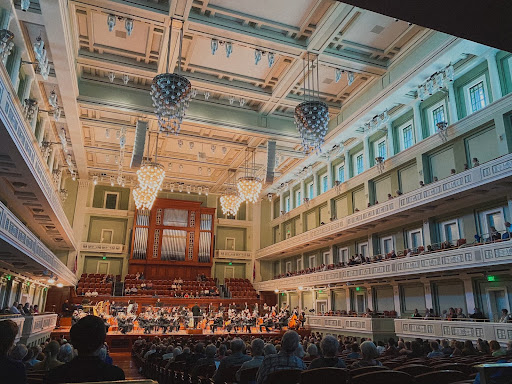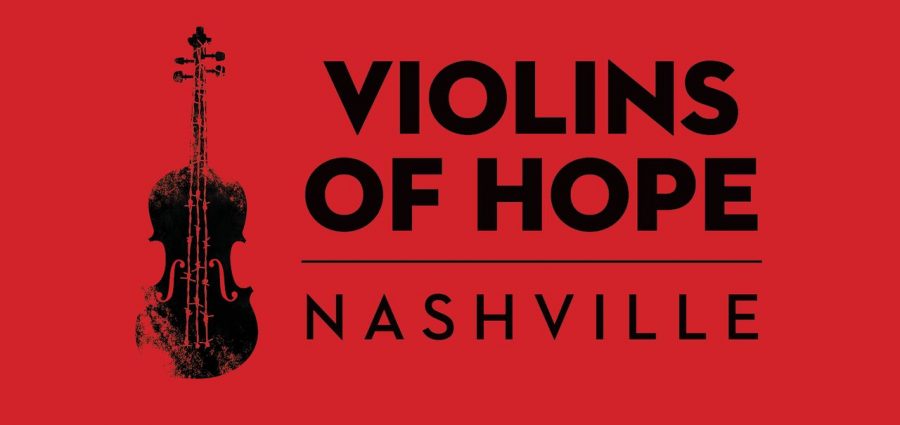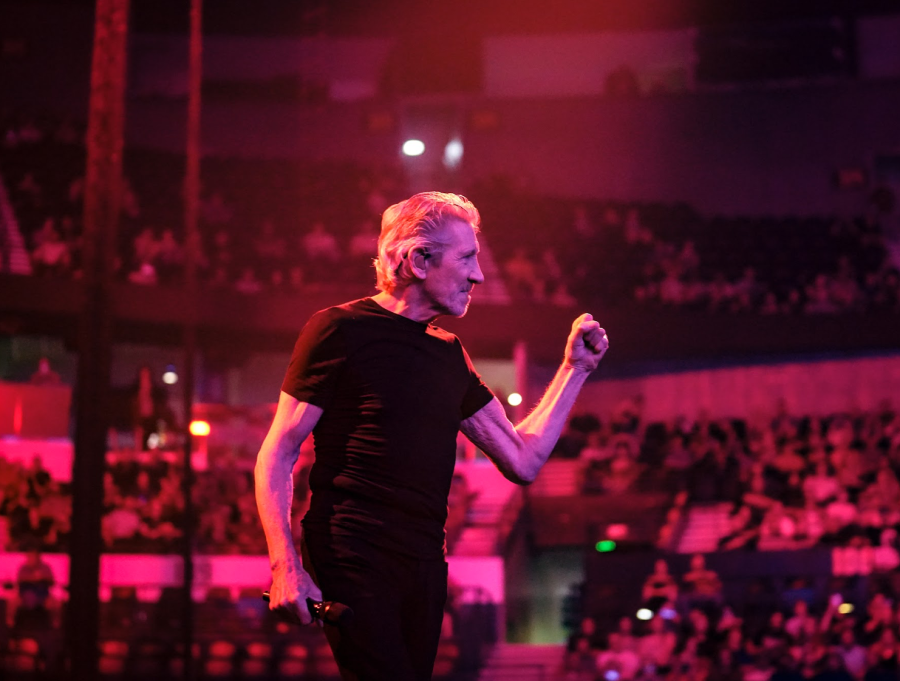I have to preface this by saying that I am a huge Pink Floyd fanboy. I have a Pink Floyd poster in my dorm room and my Spotify Wrapped is predominantly Pink Floyd.
Any attempt at a creative rendition of the best band of all time is met with a hint of skepticism on my part. And that’s exactly how I felt as I walked into the Schermerhorn Symphony Center to see “The Music of Pink Floyd with the Nashville Symphony.”
With high standards for homages and five dapper first-year friends in tow, I walked into the concert hall. Actually, I ran in, because as teenage boys, we lack time perception and decided we had enough time to get boba and then burgers before the symphony. Fortunately, the people at the door were helpful, and we made it to our seats just in time.
The Nashville Symphony started the show with “Speak to Me” and then “Breathe (In The Air),” which made me realize what was to come: the entirety of “The Dark Side Of The Moon.” Now I was skeptical for several reasons, one being the contrast inherent to Pink Floyd’s musical range. Some songs feature a myriad of classical instruments, making them perfect for a symphony, but part of the band’s discography—especially some songs on DSOTM—is dominated by synthetic noise and beats created on machines. How this side of Pink Floyd would sound in an orchestral rendition, albeit with the support of an actual rock band too, I had no idea.
This clash of cultures also manifested itself in the clothing choices of the audience. While a few audience members looked classier than the royal family in full black tie attire, perfect for a night at the symphony, other event-goers wore a simple T-shirt and jeans, as one would to a rock concert. Because this event was both.
Thus, the performance didn’t really draw me in at first, even though in a technical sense what I was listening to was phenomenal. But after the first song, I realized I needed to change my expectations, and I started getting sucked into it. This was not a recreation of Pink Floyd; it was a rendition. No one could possibly imitate an artist with 100 percent accuracy anyway, and the fact that this orchestra even attempted to perform the music of a progressive rock band was impressive enough. After that change of perspective, I was ready to enjoy the evening, vibing to the sounds of my favorite band. And I had a blast.
Yet, one major problem remained: the vocal performance. I wouldn’t go as far as yelling “Get vocal help!” to Randy Jackson, the main singer of the night, as one audience member did, but I also wouldn’t entirely disagree with his suggestion. Jackson took some time to get into his groove, which I attributed to the fact that his voice lacked the grainy and hearty essence of David Gilmour, the vocalist and guitarist of Pink Floyd. Jackson was more reminiscent of Roger Waters, the vocalist and bassist, and thus gave a stronger performance during Waters’ parts—such as on “Brain Damage.”
My ambivalence toward Jackson flew out the window during “The Great Gig In The Sky,” when a new voice emerged from the stage that gave me goosebumps. Those who know the song must understand how hard it is to recreate without an immensely powerful voice from a female singer. Well, that was exactly what I heard emanating across the concert hall, thanks to the wonderfully talented back-up singer.
After the symphony finished DSOTM, they moved on to a selection of songs from the band’s other albums. The most energetic of these was “Another Brick In The Wall, Pt. 2,” when Jackson turned the mic on the audience, assuming everyone knew the lyrics. And he was right! “We don’t need no education,” sang the entire crowd, which I hypocritically joined in on. “Hey, teachers, leave them kids alone,” we kept on singing, which I am sure would be heard from miles away if more Vandy kids were there. Personally, I would have loved to hear some tunes off of “Animals” or my all-time favorite song, “Shine On You Crazy Diamond,” but I wasn’t complaining about the symphony’s choices.
What was exceptional throughout the entire show was the guitarist’s performance. Pink Floyd thrives off of Gilmour’s solos and riffs, with his name often mentioned in the race for all-time best guitarist. The main guitarist pulled off the lengthy solos of “Time” and “Comfortably Numb” with ease, impressively filling Gilmour’s extremely large shoes.
The best moment of the entire event came in “Money,” when Jim Hook, the saxophonist, absolutely crushed the solo at the end of the song. According to Jackson, Hook was a last minute addition to the team and thus attended no rehearsals for the event. I couldn’t believe it, as Hook stole the show with his stage presence.
After the show ended, I met up with my friends at the beautiful terrace of the Schermerhorn Symphony Center, as we were split up due to last-minute ticket buying. On the terrace, looking over downtown Nashville, we talked about how great the concert was, as well as how grown up we felt for being here.
While the website read “two-hour-plus-concert” and it ended after an hour and a half, I would pay for this show again and again if I went back in time. It’s extremely difficult to replicate the ethereal nature of Pink Floyd, and going to the event renewed my undying love for the band—and reminded me that most of the fanbase of my favorite band is in fact thrice my age.







MrsMullery • May 7, 2024 at 7:18 pm CDT
What is the name of that amazing background singer?